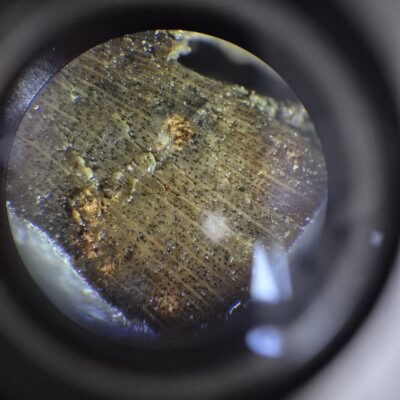Anthracology and Wood ID
Anthracology is the study of charcoal and is an important sub-specialism within the Border Archaeology palaeoenvironmental department. Wood ID uses many of the same techniques but is practised on the rarer occasions when wood has been preserved through waterlogging instead of charring.
But why is charcoal important? Isn’t it just the waste from fire?
Yes, charcoal normally is the waste from fire. But that’s what makes it important. Much of archaeology is the study of past waste and it is remarkable how much information can be gleaned from the things that people dispose of.
In fact, studying rubbish gives us a much broader and unbiased view of what life was like in the past than studying the things that people valued and may have held on to.
Charcoal can be studied as an environmental proxy but we generally study it to give detail about the choices people in the past had.
What does charcoal tell us?
By identifying the species, age and other factors that have affected the growth of a tree, we can see what wood people were selecting for their fires. Sometimes it is clear that specific trees of specific sizes were selected for certain fires.
For example, large logs from a wood that burns long and hot may have been selected for industrial purposes, wood that is fragrant may have been selected for funerary pyres, and dry brushwood that was littering the ground may have been selected for a quick campfire.
Access to quality fuel can tell us a lot about the wealth and power of people in the past and it can tell us about how woodland resources were managed to ensure fuel supplies.
How is charcoal analysed?
Anthracological analysis can be time consuming so it is important to consider whether analysis is appropriate and whether the answers it will give will enrich the archaeological data from a site. The charcoal must be cleanly sliced so that the cells are visible, it is then examined under a microscope with incident lighting..
How is waterlogged wood analysed?
It is generally important to analyse all archaeological waterlogged wood as it is not a commonplace find and is normally found as part of a structure.
The wood must be precisely sliced so that it is only one or two cells thick and can be examined under a microscope with transmitted lighting.
Do we count tree rings?
Yes, we count growth rings. But this is rarely just to tell us how old the tree was when it was felled. Growth ring curvature can show us the size of the branch while distinguishing earlywood growth and the pattern of the rings can show us how healthy the tree was or what the environmental conditions it grew in were.
What about woodworking?
Identifying wood technology is an important part of analysing wood and can even date a site by identifying what type of tool was used to cut the wood.
Link to view video
What Happens Next?
Our in-house specialists can analyse charcoal and wood as part of a post-excavation contract or as a standalone science. Anthracological, wood ID or wood technology reports can be produced for inclusion within an archaeological report or as a standalone report. The information obtained from this analysis can be vital in informing archaeological interpretations, adding detail to the story of a site, and satisfying Planning Conditions that require the fullest level of detail.









